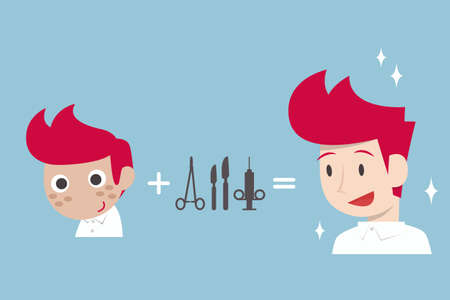Introduction to Microdermabrasion
Microdermabrasion has become a widely recognized and sought-after skin resurfacing treatment across the United States. Known for its non-invasive approach, microdermabrasion is popular among Americans who are looking for effective ways to refresh their skin’s appearance without significant downtime. This cosmetic procedure involves the exfoliation of the outermost layer of dead skin cells, which helps improve overall skin texture, reduce the visibility of fine lines, minimize pore size, and even out skin tone. Its appeal lies in the quick recovery time, minimal discomfort, and suitability for various skin types and ages. From busy professionals seeking a lunch-hour glow-up to those addressing sun damage or acne scars, microdermabrasion is frequently chosen as a first-line solution in both dermatology clinics and med spas throughout the U.S., setting the stage for understanding the key differences between crystal and diamond microdermabrasion techniques.
2. What is Crystal Microdermabrasion?
Crystal microdermabrasion is a non-invasive skin resurfacing technique widely used in dermatology and cosmetic treatments across the United States. The process involves using a specialized handheld device to spray fine abrasive crystals onto the skin’s surface, which exfoliates dead skin cells and stimulates cell turnover. A vacuum mechanism then simultaneously suctions away both the crystals and the exfoliated skin particles, leaving the skin smoother and brighter.
Technical Mechanism
The core technology behind crystal microdermabrasion relies on controlled physical abrasion. The device propels micro-fine crystals at high velocity onto the epidermis, mechanically removing the outermost layer of dead skin cells. This action not only rejuvenates the skin but also promotes collagen production, enhancing overall skin texture and tone over a series of treatments.
Types of Crystals Used
| Crystal Type | Description | Common Use |
|---|---|---|
| Aluminum Oxide | Hard, inert, and hypoallergenic; most widely used in U.S. clinics | General exfoliation for most skin types |
| Sodium Bicarbonate | Softer, water-soluble, and less abrasive than aluminum oxide | Suitable for sensitive or reactive skin |
| Sodium Chloride | Naturally derived and gentle on the skin | Mild exfoliation for delicate areas |
Typical Treatment Experience
A standard crystal microdermabrasion session typically lasts 30 to 45 minutes. After cleansing the treatment area, the technician glides the handpiece over the skin in systematic passes. Patients may feel a mild scratching or sandblasting sensation during the procedure, with minimal discomfort and no downtime required post-treatment. Immediately after, clients often notice their skin feels refreshed and appears more radiant—a result that makes this method popular in American medspas and dermatology practices seeking quick, visible improvements without invasive techniques.

3. What is Diamond Microdermabrasion?
Technical Breakdown of Diamond Microdermabrasion
Diamond microdermabrasion is a modern, non-invasive skin resurfacing procedure that utilizes diamond-tipped wands to exfoliate the outermost layer of the skin. Unlike traditional crystal microdermabrasion, which relies on blasting fine crystals onto the skin, the diamond method employs natural or synthetic diamond particles embedded into the tip of a handheld device. This approach offers precise abrasion and minimizes the risk of stray particles causing irritation or inhalation issues.
The Role of Diamond-Tipped Wands
At the core of this technology is the diamond-tipped wand. The wand comes in various grit levels, allowing estheticians to customize treatments based on skin type and desired outcomes. As the device glides across the skin, the diamond surface gently abrades dead skin cells while a built-in vacuum simultaneously suctions away debris. This dual-action process not only polishes the skin but also stimulates blood flow and promotes lymphatic drainage, supporting healthier skin regeneration.
Step-by-Step Insight Into the Procedure
The typical diamond microdermabrasion session begins with cleansing to remove oils and impurities. Next, the technician selects an appropriate diamond tip and adjusts suction settings for optimal safety and efficacy. The wand is then systematically moved over targeted facial zones in smooth, overlapping strokes. Throughout the treatment, the integrated vacuum ensures continuous removal of exfoliated particles. After covering all areas, any remaining residue is wiped away, followed by application of soothing serums or moisturizers to enhance post-treatment recovery. Most clients experience minimal discomfort and can return to daily activities immediately, making diamond microdermabrasion a popular choice for Americans seeking efficient, low-downtime skincare solutions.
4. Key Differences in Technology and Technique
When comparing crystal and diamond microdermabrasion, their primary distinctions lie in the underlying physical mechanisms, the equipment used, and the method of application. Understanding these differences is essential for both skincare professionals and clients seeking optimal results tailored to their skin types.
Physical Mechanisms
Crystal microdermabrasion uses a stream of fine crystals—commonly aluminum oxide, sodium bicarbonate, or magnesium oxide—that are blasted onto the skin’s surface. These crystals act as abrasive agents to exfoliate dead skin cells, which are then vacuumed away along with debris. In contrast, diamond microdermabrasion utilizes a handpiece embedded with a diamond tip. The diamond-tipped wand is manually moved across the skin to physically abrade and polish the surface while suction simultaneously removes exfoliated particles.
Equipment Comparison
| Feature | Crystal Microdermabrasion | Diamond Microdermabrasion |
|---|---|---|
| Abrasive Material | Aluminum oxide, sodium bicarbonate, or magnesium oxide crystals | Synthetic or natural diamond-encrusted tips |
| Main Device Components | Crystal canister, compressor, handpiece with nozzle for crystal flow and suction | Diamond-tipped wand with adjustable suction |
| Consumables Required | Replacement crystals, filters | Replaceable or sterilizable diamond tips, filters |
| Maintenance Needs | Regular cleaning of internal tubing to prevent clogging from residual crystals | Sterilization of wands and tips between sessions; less internal maintenance required |
| Portability & Size | Larger and more complex due to crystal handling systems | Often more compact and portable units available |
Application Methods
The technique for each method also differs significantly. Crystal systems require precise control of crystal flow rate and vacuum pressure to balance effective exfoliation with client comfort. The handpiece must be kept moving constantly to avoid uneven abrasion or potential irritation from residual crystals. Diamond microdermabrasion allows for more targeted treatment; practitioners can adjust pressure and speed based on the client’s needs without worrying about leftover particles. The controlled abrasion from the diamond tip provides greater consistency, especially in sensitive areas such as around the eyes or nose.
Main Takeaways in Practice
- Crystal microdermabrasion: Offers deeper exfoliation but may leave behind loose particles requiring thorough cleanup. Best suited for thicker or less sensitive skin types.
- Diamond microdermabrasion: Provides precision and cleanliness, ideal for sensitive areas and clients who prefer a particle-free experience.
Summary Table: Physical & Technical Differences at a Glance
| Crystal System | Diamond System | |
|---|---|---|
| Abrasion Type | Abrasive crystals projected onto skin surface by air pressure | Direct mechanical abrasion by diamond-tipped wand |
| Suction Use | Suction removes both exfoliated cells and spent crystals simultaneously | Suction removes only exfoliated cells (no free-floating particles) |
| Treatment Control | Difficult to target specific areas precisely due to crystal dispersion | Easier to control depth and area of abrasion manually |
| Sensation During Treatment | Slightly gritty feeling; some patients report mild discomfort from residual crystals | Smoother sensation; generally considered more comfortable |
| Cleansing Post-Treatment | Thorough removal of remaining crystals needed after session | No particle residue; easier post-treatment clean-up |
5. Effectiveness and Suitability for Skin Types
When considering the effectiveness of crystal versus diamond microdermabrasion, it is essential to analyze clinical data related to different skin types, sensitivity levels, and common treatment goals. Crystal microdermabrasion utilizes fine crystals, typically aluminum oxide, which are blasted onto the skin to exfoliate dead cells and then vacuumed away. This method is effective for addressing uneven texture, mild acne scars, and sun damage. However, due to the abrasive nature of loose crystals, it may not be ideal for individuals with sensitive or highly reactive skin. In contrast, diamond microdermabrasion employs a diamond-tipped wand to mechanically exfoliate the skin without loose particles. Clinical studies show that diamond devices offer more controlled abrasion, making them better suited for sensitive skin types or areas requiring precision, such as around the eyes or lips.
Suitability by Skin Type
For oily or thicker skin with pronounced roughness or congestion, crystal microdermabrasion can deliver deeper exfoliation and noticeable improvements in texture. On the other hand, those with thin, delicate, or rosacea-prone skin generally benefit more from diamond microdermabrasions gentler approach. Additionally, diamond systems allow practitioners to adjust tip coarseness and suction strength according to individual needs, further enhancing suitability across diverse skin profiles.
Use Cases Based on Sensitivity Levels
Clinical data indicate that patients with higher sensitivity levels experience less irritation and post-procedure redness with diamond microdermabrasion. Its closed-loop system eliminates airborne particles, reducing the risk of allergic reactions or post-treatment discomfort. Conversely, crystal microdermabrasions open system may cause slight stinging or dryness in those with compromised skin barriers.
Common Treatment Goals
For general rejuvenation, both methods yield improvements in tone and radiance. However, for targeted correction of superficial scars or stubborn pigmentation, crystal microdermabrasion’s stronger exfoliation can sometimes provide faster results. Diamond microdermabrasion is often preferred in medical spas and dermatology clinics for its safety profile and versatility across all Fitzpatrick skin types. Ultimately, treatment selection should be based on a professional assessment of the patients unique skin characteristics and clinical objectives.
6. Safety Considerations and Side Effects
When it comes to choosing between crystal and diamond microdermabrasion, understanding the safety profiles, potential risks, and recommended aftercare for each method is crucial, especially for clients in the United States where patient expectations and regulatory standards are high.
In-Practice Safety
Crystal microdermabrasion utilizes a stream of fine crystals (commonly aluminum oxide) that are blasted onto the skin and then vacuumed away, effectively exfoliating the outermost layer. In contrast, diamond microdermabrasion employs a diamond-tipped wand to manually abrade the skin while simultaneously suctioning debris. Both methods should be performed by licensed professionals in a controlled environment to minimize risks such as infection or excessive irritation.
Potential Risks and Complications
For crystal microdermabrasion, there is a minor risk of residual crystals remaining on the skin post-treatment, which can cause temporary discomfort or, in rare cases, eye irritation if not properly managed. Some individuals may experience mild redness, swelling, or even pinpoint bleeding if the device is used too aggressively. Diamond microdermabrasion typically presents fewer risks related to foreign particles; however, improper technique or inadequate hygiene protocols can lead to abrasions or bacterial infections. Both procedures may temporarily exacerbate sensitive skin conditions or trigger mild breakouts.
Aftercare Recommendations
After either treatment, American skincare specialists advise gentle cleansing and liberal application of broad-spectrum sunscreen to protect the newly exposed skin from UV damage. Clients should avoid harsh chemicals, exfoliants, or direct sun exposure for several days. For crystal microdermabrasion specifically, thoroughly rinsing off any residual crystals is essential. Additionally, applying a soothing moisturizer can help reduce redness and promote healing. If any unusual side effects occur—such as prolonged redness, pain, or signs of infection—clients are encouraged to consult with their provider promptly. Ultimately, both methods are considered safe when performed correctly; however, discussing individual skin type and medical history with your practitioner will ensure optimal results and minimize complications.
7. Making the Best Choice for Your Skincare
When it comes to choosing between crystal and diamond microdermabrasion, understanding your unique skincare needs and goals is essential. In the U.S., both clients and skincare professionals should weigh factors such as skin type, sensitivity, budget, lifestyle, and desired outcomes before making a decision. For example, if you have sensitive skin or are concerned about post-treatment cleanup, diamond microdermabrasion may offer a gentler and more convenient solution. On the other hand, if you’re looking to target stubborn texture or deep-set imperfections, crystal microdermabrasion can deliver a more intensive exfoliation.
Consult with Licensed Professionals
It’s highly recommended that individuals consult with licensed estheticians or dermatologists who are experienced in both techniques. These professionals can assess your skin’s current condition and recommend the most suitable method based on clinical evaluation rather than guesswork. Many American clinics also offer personalized consultations to discuss treatment options aligned with your lifestyle and long-term skincare objectives.
Consider Ongoing Maintenance
Another important factor is maintenance. Think about how frequently you’re willing to return for treatments and whether you prefer minimal downtime. Diamond microdermabrasion often appeals to those seeking quick touch-ups with less mess, while crystal systems may require more thorough post-procedure care but can be effective for periodic deeper exfoliation.
Personal Preferences Matter
Your comfort level during the procedure and your personal preferences should not be underestimated. Some clients prefer the tactile feedback of diamond-tipped wands, while others feel that the sensation of fine crystals provides a more noticeable exfoliating effect. Don’t hesitate to ask for a patch test or trial session to see which method feels best for you.
Final Thoughts: Individualized Choices for Optimal Results
Ultimately, there is no one-size-fits-all answer when deciding between crystal and diamond microdermabrasion. By considering your specific goals, consulting with knowledgeable professionals, and factoring in practical aspects like time commitment and comfort, you can make an informed choice that supports healthy, glowing skin. In the diverse landscape of American skincare, personalized solutions ensure that every client receives optimal results tailored to their individual needs.


